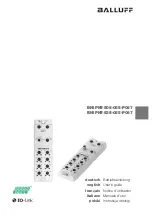
The performance of the Aquasential
®
RO and Smart RO Advanced Drinking Water Systems can be characterized
and judged by the quality and quantity of the water produced by the systems� By measuring the contaminant removal
performance and flow rates of the system, its operating status can be easily evaluated�
Factors Which Affect Performance
Performance of the reverse osmosis membrane is affected by several factors which must be considered when judging the
condition of the systems� The main factors which affect system performance are pressure, temperature, total dissolved
solids level, recovery and pH�
Pressure
Water pressure affects both the quantity and quality of the water produced by the RO membrane� Generally, the more
water pressure, the better the performance of the systems� Be careful not to go below 40 psi or exceed 120 psi, the
minimum and maximum operating pressure of the Aquasential
®
RO and Smart RO Advanced Drinking Water Systems�
Temperature
The reverse osmosis process slows with decreasing temperature� To compensate, a temperature correction factor is used
to adjust the actual performance of the RO membrane filter to the standard temperature of 77°F (25°C)� This allows the
performance of the unit to be accurately gauged against Culligan’s published standards� Temperature does not affect the
concentrate flow rate�
Total Dissolved Solids
The minimum driving force which is necessary to stop or reverse the natural osmosis process is termed osmotic pressure�
As the total dissolved solids level of the feed water increases, the amount of osmotic pressure increases and acts as back
pressure against the reverse osmosis process� Osmotic pressure becomes significant at TDS levels above 500 mg/L (ppm)�
Hardness
Hardness is the most common membrane foulant� If ignored, this relatively harmless component of feed water will scale
a membrane over time� Use of a softener will reduce the fouling effect on a membrane� One way to detect too much
hardness in the feed water is the weight of a membrane installed for a period of time� A fouled membrane (dried) will weigh
significantly more than a new membrane� The increase in weight is a result of precipitated hardness inside the membrane�
Iron
Iron is another common membrane foulant� There are a variety of types of iron, some of which cannot be removed by
an iron filter� Clear water iron can be removed more effectively by a softener� Particulate iron can be removed more
effectively by a 1 micron filter� Organic-bound iron can be removed only by activated carbon or macroporous anion resin�
If there is enough iron to exceed the EPA secondary drinking water standard and softening the water is not an option and
the iron is soluble, then an iron filter is appropriate� If none of these are an option then regular replacement of membranes
will have to be accepted�
11
01040605 A 06/21
Application & Operation












































